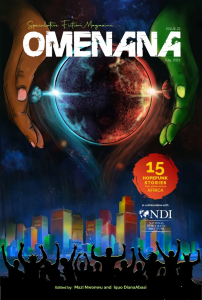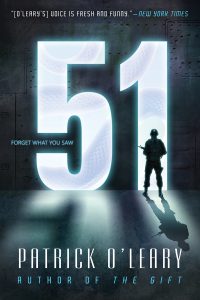Karen Burnham Reviews Short Fiction: Omenana, Analog, and Clarkesworld
 Omenana 7/22
Omenana 7/22
Analog 11-12/22
Clarkesworld 11/22
In July Omenana published their 22nd issue, this one in collaboration with the National Democratic Institute titled “Positive Visions of Democracy” featuring a lot of hopepunk and an emphasis on communal decision making. This is part of the same project that inspired Mithila Review’s “Planet Democracy” issue, which I reviewed in November. I’m hugely in favor of anything that nudges speculative fiction to dive into the complexities of forming narratives around democratic processes, which can be much harder to distill than the traditional kings, queens, and empires territory. So I’m thrilled to see stories such as “King of Spirits” by Tardoo Ayua. The mortal Akombo is asked to count the votes cast for three spirits that wish to become King of the spirits. Those spirits try to bribe and threaten him, but he is protected by Ikyarem and Egbonkeke. The most important thing about the voting process is the transparency that Akombo brings to it, which is critical for free and fair societies. The process of voting is also key to “A Ride for the Future” by Mwenya S. Chikwa. After a war with aliens, young Chibesa’s family has focused on converting alien mechanisms and inventing new technology. Through Chibesa’s story, Chikwa makes the argument that putting systems in place to bring scattered communities meaningfully into the voting process is just as important.
Also important is the theme found in “The Third Eye Manifester” by Ishola Abdulwasiu Ayodele. In this story, a generation starship is in trouble. Nkem leads the council with Jiya as her main opposition. They find an abandoned ship with a reality altering device, and she convinces the council to allow its thoughtful use as a potential solution. The first attempt goes badly, and she and Jiya split as a crisis point nears. But Jiya is not presented as evil or corrupt, he simply represents a perfectly rational alternative view. They’re able to change their viewpoints as facts dictate. We get another look at this theme from the other side in “Oyarsu-Terraforming Earth” by Dooshima Tsee. Wuese is an elder of a society that has long since gone underground. They’ve developed practical fusion, and now Overlanders, particularly those representing places where Wuese’s family was tormented and hunted long ago, want it. The Council follows its processes, including soliciting the input of students and having them run simulations of possible outcomes. They decide to negotiate, which is something that Wuese can barely countenance. Being able to accommodate differing viewpoints without undermining the overall system is the only way pluralistic societies can work.
There are also stories of impromptu communities forming in unusual circumstances. In “Earth, Fire, Air, Water” by Manu Herbstein, a survivor tells the story of surviving an apocalypse sixty years earlier. Some unknown group targeted nuclear weapons at areas that would have maximum geophysical impact, triggering volcanoes and ice shelf collapses. The narrator rides out the resulting tsunamis and devastation at the university on the Cape Peninsula in South Africa. People join together and pool their resources to get through the short-term disasters, medium-term nuclear fallout, and eventually long-term rebuilding. In “The Ghosts of the Manhole at Enem Junction” by Achalugo Chioma Ilozumba, there is a manhole at a busy intersection in Lagos, Nigeria. The manhole cover is routinely stolen, and pedestrians routinely fall into the hole and are killed. This happens often enough that their ghosts form a society and decide to take action to deter thieves. Two of the ghosts go off script during their first attempt, but overall the larger group’s plan prevails.
To round out the year, the November/December issue of Analog features a lovely variety of stories. “The Actor” by Kedrick Brown is a nice bit of meta fiction. We meet Ray, an actor, playing Lomua heroically hunting on “Earth,” simulated for audience enjoyment. After that intense performance, the producer wants something more utopian, sending Ray into brainstorming mode, where he winds up questioning his own reality. I have a real fondness for another meta entry, “The Engineer’s Gamble” by Robert E. Harpold. It’s the tall-tale story of a cargo ship almost wrecked and the engineer who pulls out every stop to make it through to Europa. “Whatever follows, he knows he’s taken the Engineer’s Gamble, and wasn’t found wanting.” It’s a nice comment on the heroic engineer trope and speaks to those of us who often find ourselves thinking more clearly in a crisis than in the normal course of events. I also appreciated the mission design in “Beneath the Surface, a Womb of Ice” by Deborah L. Davitt, a Mars exploration story. Serafina and Tabar are married and part of a team searching for Martian caves. They proceed with the utmost caution, but right after discovering a liquid aquifer are devastated by a cave in. There is plenty of drama and tension without resorting to histrionics or stupid decisions. Out on the creepier frontier of space exploration, “The Twenty-Body Problem” by Tom Jolly imagines Lor looking for resources in a Bermuda-Triangle-style region of a nebula and finding an asteroid object… that is mostly dead bodies. She investigates with some help from a remote friend, and the solution to the mystery is satisfying. Also disturbing is “Legacy” by Derrick Boden, in which we see a mother putting herself and her children repeatedly through a simulation that ends with one of the children dying… but there are simulations within simulations and we keep (literally) peeling back the layers.
“Maximum Efficiency” by Holly Schofield imagines damaged robot K3RA, post-Devastation, wandering lost until it finds a single human in a cabin. The human has chronic fatigue syndrome, eking out a living for herself, conserving her energy appropriately. As K3RA struggles to sort out and redefine itself, it helps out around the cabin, then finds a goal for itself. The ending seemed a bit quixotic, but the relationship between the two characters makes sense. “Starlite” by C. L. Schacht is a nice near-future, slice-of-life story. Raul is father to Cal, divorced from Riley. There’s friction over custody, as Riley is leaving for a two- year UN assignment and wanted to take Cal with her. But in a world with carbon-constrained travel, that would mean two years away from his father. Raul works for a company that’s mining through the trash dumps of Los Angeles, able to recycle polymers and other useful substances. The story focus is on the family drama, so there’s possibly a little more worldbuilding than strictly needed, but both parts are strong.
In November’s Clarkesworld, my favorite story is “The Whelk” by Samara Auman, which I read in a very meta way. A robot programmed specifically to evoke nostalgia feels useless in an era that’s all about looking to the future. It finds an abandoned spaceship, beached, named The Whelk. They hang out together and learn to communicate, and the robot learns about the attitudes of different communities as different bunches of humans gather nearby to discuss the ship. The robot learns that the Whelk’s history wasn’t always savory, but still sticks with the ship to the end and beyond. Allegorically, it’s an interesting examination of shifting attitudes towards science fiction and its symbols over the years. Another meditative piece is “Hummingbird, Resting on Honeysuckles” by Yang Wanqing (translated by Jay Zhang). Here a mother (first person) is narrating to her deceased daughter (second person). The mother is a mortician, and her daughter lived fast and died relatively young of cancer. A gifted artist, she bestows all her digitally recorded life to her mother thanks to the “hummingbird” tech that was her constant companion. This also allows for a digital reincarnation of sorts, which may provide a path to closure for the mother. Probably one of the most life-affirming views of that kind of ubiquitous recording technology that I’ve seen yet.
In “The Rhythm of the Soul” by Michelle Julia John, the narrator’s father makes a steel pan drum that can find the “perfect frequency” for an individual, unlocking powers in them, including the power to manifest physical things. The government immediately works to shut down the drums and control (imprison) anyone who has heard their frequency. The narrator starts to fight back after being transferred to yet another prison. It’s dramatic commentary on the governmental instinct to control anything perceived to be a “threat.” More governmental malfeasance, this time in the form of neglect, is found in “The Lonely Time Traveler of Kentish Town” by Nadia Afifi. Sasha is a time traveler, in debt and working as a tour guide for the government (taking people to see Anne Boleyn’s coronation and later execution, for instance). She breaks a number of rules to take a private job for Mr. Nassar. His grandfather had worked in the British civil service in Palestine before the formation of Israel. He was never given the pension that he earned and spent the rest of his life fighting for it. There’s a family story that he tracked down and spoke to an elderly Winston Churchill in person, and Mr. Nassar wants to see that encounter for himself. It doesn’t unfold quite the way either of them expect.
Recommended Stories
“The Whelk”, Samara Auman (Clarkesworld 11/22)
“King of Spirits”, Tardoo Ayua (Omenana 7/22)
“Beneath the Surface, a Womb of Ice”, Deborah L. Davitt (Analog 11-12/22)
“The Engineer’s Gamble”, Robert E. Harpold (Analog 11-12/22)
“Hummingbird, Resting on Honeysuckles”, Yang Wanqing (Clarkesworld 11/22)
This review and more like it in the January 2023 issue of Locus.
 While you are here, please take a moment to support Locus with a one-time or recurring donation. We rely on reader donations to keep the magazine and site going, and would like to keep the site paywall free, but WE NEED YOUR FINANCIAL SUPPORT to continue quality coverage of the science fiction and fantasy field.
While you are here, please take a moment to support Locus with a one-time or recurring donation. We rely on reader donations to keep the magazine and site going, and would like to keep the site paywall free, but WE NEED YOUR FINANCIAL SUPPORT to continue quality coverage of the science fiction and fantasy field.
©Locus Magazine. Copyrighted material may not be republished without permission of LSFF.







